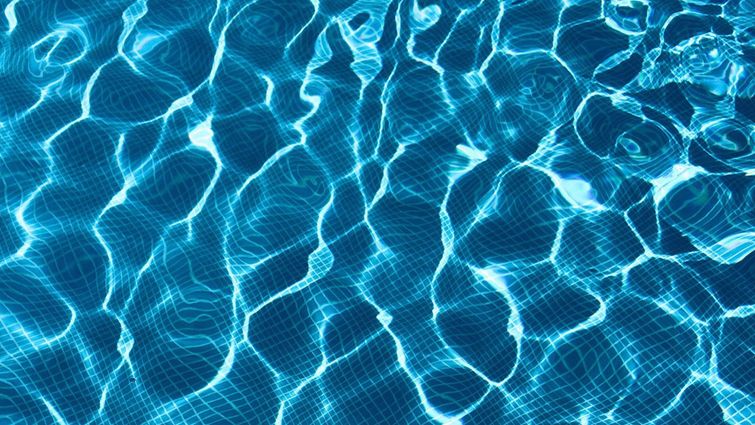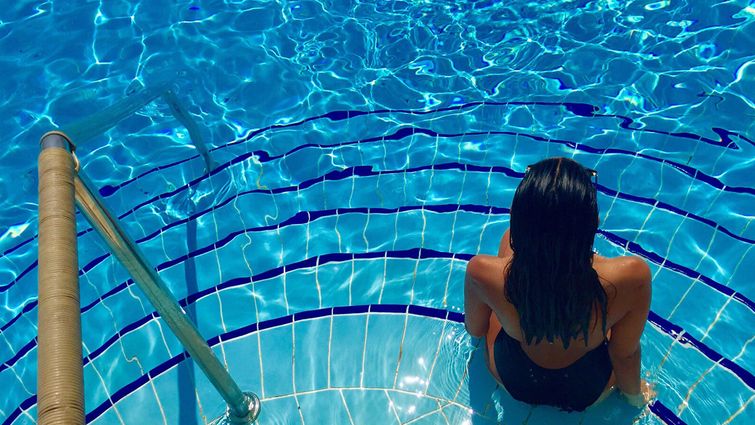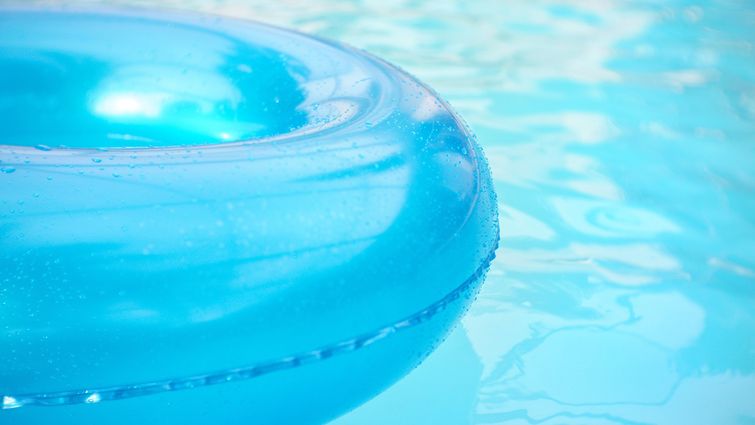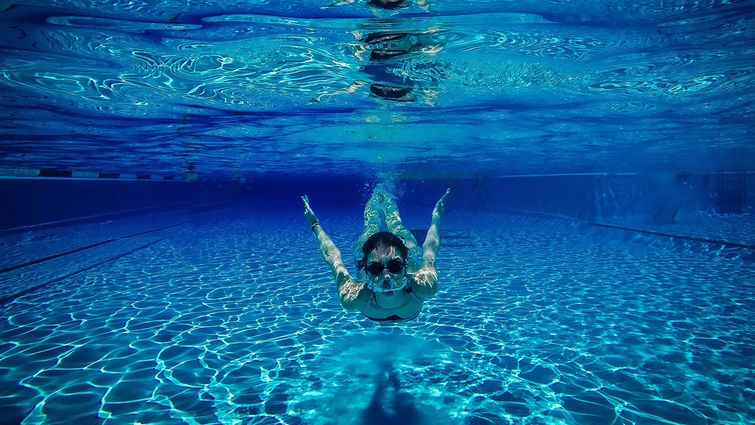
Pool Flocculant vs. Clarifier
What Is Pool Clarifier?
Pool clarifiers are chemical mixtures that include polymers—natural or artificial substances that are made up of big particles. When added to your water, the polymers are used as coagulants, attracting and binding to foreign particles with positively charged ions in your water. As the polymers bind with other particles, they form particle clumps that float and get caught in your filter system. That way, all those tiny particles can be collected and removed.
What Is Pool Flocculant?

Pool flocculant, also known as pool floc, is another chemical that you can add to your pool. Flocculant also acts as a coagulant, binding suspended particles in your pool to create clumps.
The main difference between floc and clarifier is that pool floc forms larger clumps that sink to the bottom of the pool; the tiny particles clump together, becoming so heavy that they sink. Therefore, when you use flocculant, you will need to break out your pool vacuum to remove the particles from the bottom of your pool.
Which Is Better: Flocculant or Clarifier?
Pool clarifier and flocculant are both great options for clearing your water. To help you decide which product to incorporate into your pool care routine, we will discuss the pros and cons of each product. That way, you can determine which product will suit you and your needs best.
Pool Floc

Pros:
- Effective. Pool flocculant is a powerful coagulant that will form large clumps to extract the contaminants from your pool.
- Compatibility. Flocculant works with a variety of pool filters, including diatomaceous earth (DE) filters and sand filters.
- It works fast. Pool floc will take 8 to 16 hours to coagulate contaminants in your pool.
Cons:
- More work. Since floc creates bigger particles that sink, you will have to use a manual vacuum to remove all the particles from your pool.
- Pool water loss. After using floc, you will need to bypass your pool filter and vacuum the pool on the “waste” setting. Bypassing your filter and vacuuming the pool can cause water loss because water is removed as you vacuum.
Pool Clarifier
Pros:
- Minimal work. Pool clarifiers will do most of the work for you. After adding a clarifier, you do not need to do anything besides balancing your pool chemistry.
- Improves pool filter efficiency. With the help of the clarifier, your pool’s filter will be able to catch more contaminants.
Cons:

- Time. Pool clarifier can take 2 to 3 days to clear pool water. So if you are planning on having guests over and want your pool water to look pristine, you may need to wait up to 3 days.
- Filter maintenance. The swimming pool filter system will need to be cleaned thoroughly after using a clarifier because it can get clogged with the coagulated particles.
- Reduced chlorine. Too much clarifier can increase combined chlorine, meaning that there will be less chlorine to bind with the contaminants in your pool. You will need to measure your clarifier carefully to ensure this does not happen.
How to Clear Cloudy Water
Using Flocculant
- Recirculate filter. First, set your sand or DE filter to “recirculate.” Do not skip this step because flocculant can ruin your DE, sand, or cartridge filter.
- Test and balance pH. Test the water chemistry and then balance it accordingly. The water should have a pH level of anywhere from 7.4 to 7.6 before you add any flocculant.
- Prepare and add flocculant. Next, prepare the flocculant. Follow the instructions closely to ensure that you have the correct amount of flocculant. Use a pool volume calculator if you do not know the amount of water in your swimming pool. Next, pour the prepared flocculant into your swimming pool around the edges.
- Circulate. Run your pool pump for several hours to thoroughly circulate the flocculant in your pool.
- Let sit. The flocculant will need to settle for 6 to 8 hours. During this time, you will notice some particle clumps forming and sinking to the bottom.
- Vacuum particles out of the pool. After the flocculant has settled, you can remove the clumps with your vacuum.
- Replace any lost water. Use a garden hose to increase your pool’s water level back to the desired level.
Using Clarifier

- Balance your pool chemistry. Use a test kit to determine the current status of your pool water, including its pH, chlorine levels, and more. Make sure to balance your pH between 7.4 and 7.6 because pH that is too high can allow dissolved solids to break away from the solution and pH that is too low can reduce free chlorine levels.
- Prepare and dilute clarifier. Read the manufacturer’s instructions on your clarifier, then prepare it accordingly. Make sure you use the correct amount of clarifier for your pool’s volume.
- Run your filter. Prepare and run your filter to start the circulation and filtering process. Keep your filter system running overnight to catch as many particles as possible.
- Use pool clarifier. Add the clarifier to your pool by pouring it into the pool’s outer edges. Let it rest for 2 to 3 days while monitoring the pH levels. You are encouraged to swim in your pool after adding clarifying because it can improve circulation, stir up the particles, and speed up the clarifying process.
